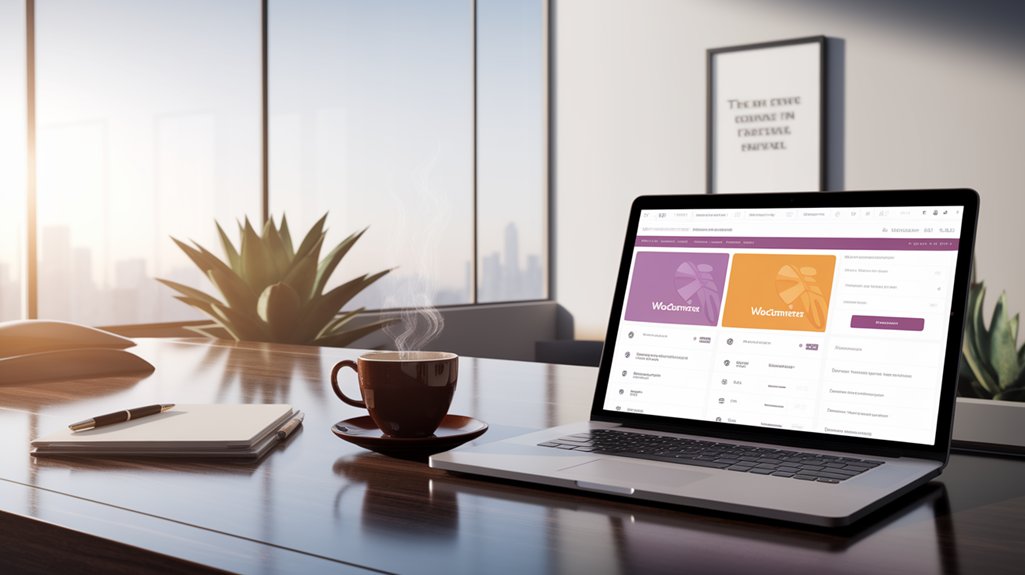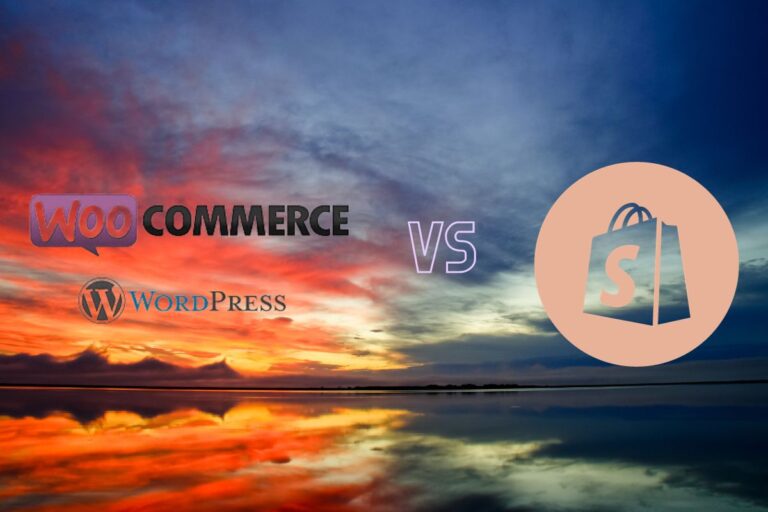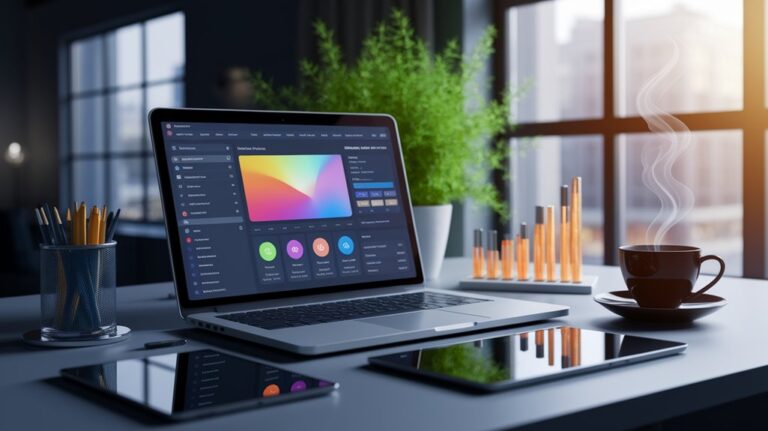Get Ahead: Optimize Your Woocommerce Store With Professional Maintenance
As we navigate the competitive landscape of e-commerce, it’s crucial we prioritize the maintenance of our WooCommerce store. Regular upkeep not only safeguards our business but also enhances the overall shopping experience for our customers. By focusing on a few key aspects of professional maintenance, we can ensure our store remains efficient and secure. So, what are the essential elements we need to consider to stay ahead?
Key Takeaways
- Regular software updates enhance performance and fix bugs, ensuring your WooCommerce store runs smoothly.
- Security enhancements, such as SSL certificates and strong password policies, protect customer data and build trust.
- Performance optimization techniques like image compression and lazy loading improve site speed and user experience.
- Routine audits and compatibility checks identify vulnerabilities and ensure seamless operation with plugins and themes.
- Choosing a specialized maintenance provider ensures proactive solutions and adaptable support for your store’s growth and evolving needs.
Understanding the Importance of WooCommerce Maintenance
Maintaining our WooCommerce store is crucial for its success and longevity. We understand that in a fast-paced digital landscape, staying ahead means being proactive about our store’s performance.
Regular maintenance isn’t just a chore; it’s an opportunity to innovate and enhance our customer experience. By keeping our plugins updated and monitoring site speed, we ensure seamless transactions and foster customer trust.
Regular maintenance is an opportunity to innovate, ensuring seamless transactions and building customer trust.
Additionally, we can identify and fix potential issues before they escalate, saving us time and money in the long run. Investing in maintenance allows us to adapt to changing market trends, ensuring our store remains relevant and competitive.
Let’s embrace this continuous improvement mindset and make our WooCommerce store a pinnacle of efficiency and innovation.
Key Elements of Professional Maintenance
When it comes to maintaining our WooCommerce store, we can’t overlook the key elements that keep things running smoothly.
Regular software updates, security enhancements, and performance optimization are essential to ensure our site remains secure and efficient.
Let’s explore how we can effectively implement these practices for our store’s success.
Regular Software Updates
Regular software updates are essential for keeping our WooCommerce store running smoothly and securely. By regularly updating our platform, we ensure that we’re utilizing the latest features and enhancements that can elevate our customer experience.
These updates not only improve performance but also fix bugs that could hinder our store’s functionality. Plus, staying current with the latest versions helps us maintain compatibility with new plugins and themes that drive innovation.
It’s crucial that we prioritize these updates, as they empower us to adapt quickly to changing market trends and customer needs. By committing to regular software updates, we’re not just maintaining our store; we’re actively investing in its future success and growth.
Security Enhancements
As we keep our WooCommerce store updated, we must also focus on security enhancements that protect our business and customers.
Strong security measures not only build trust but also safeguard our data.
Here are four key enhancements we should implement:
- Regular Security Audits: Conduct thorough assessments to identify vulnerabilities.
- SSL Certificates: Encrypt customer information to ensure safe transactions.
- Two-Factor Authentication (2FA): Add an extra layer of protection for our admin accounts.
- Firewall Protection: Deploy robust firewalls to block malicious traffic.
Performance Optimization
To achieve optimal performance in our WooCommerce store, we must prioritize key elements that enhance speed and user experience. Implementing strategies like image optimization, caching solutions, and minimizing HTTP requests can significantly boost our site’s efficiency. Here’s a quick reference to these components:
| Element | Importance | Innovative Tools |
|---|---|---|
| Image Optimization | Reduces load times | Smush, Imagify |
| Caching Solutions | Enhances user experience | W3 Total Cache, WP Rocket |
| Minifying Resources | Decreases file size | Autoptimize, Fast Velocity |
| CDN Integration | Enhances global reach | Cloudflare, KeyCDN |
| Regular Updates | Maintains performance | Automated plugins |
Enhancing Performance and Speed
To boost our WooCommerce store’s performance and speed, we should focus on optimizing image sizes and minimizing HTTP requests.
By compressing images, we can significantly reduce load times, making our site more user-friendly.
Additionally, cutting down on HTTP requests can streamline the browsing experience for our customers.
Optimize Image Sizes
Properly optimizing image sizes is crucial for enhancing our WooCommerce store’s performance and speed.
When we streamline our images, we create a smoother shopping experience and boost our site’s efficiency.
Here’s how we can achieve this:
- Choose the Right Format: Use JPEG for photos, PNG for graphics, and SVG for logos.
- Compress Images: Utilize tools like TinyPNG or ImageOptim to reduce file sizes without losing quality.
- Set Appropriate Dimensions: Resize images to fit their display area, avoiding unnecessarily large files.
- Leverage Lazy Loading: Implement lazy loading to defer off-screen images, improving initial load times.
Minimize HTTP Requests
Reducing HTTP requests is one of the most effective ways to boost our WooCommerce store’s performance and speed. By streamlining our site, we can enhance user experience and drive conversions.
Let’s start by combining CSS and JavaScript files, which reduces the number of separate requests. We can also make use of image sprites, consolidating multiple images into one to minimize loading times.
Additionally, we should evaluate our plugins and remove any that aren’t essential; every plugin can add to the request count.
Finally, leveraging browser caching allows us to serve returning visitors faster.
Strengthening Security Measures
As we navigate the complexities of running a WooCommerce store, strengthening our security measures becomes essential to protect both our business and our customers.
Here’s how we can innovate our security approach:
- Implement SSL Certificates: Encrypting data ensures that sensitive information is safe during transactions.
- Regularly Update Plugins and Themes: Keeping everything current minimizes vulnerabilities in our system.
- Utilize Strong Password Policies: Encouraging complex passwords reduces the risk of unauthorized access.
- Install Security Plugins: Tools like Wordfence or Sucuri can provide real-time monitoring and added layers of protection.
Improving User Experience
After establishing robust security measures, we can turn our attention to enhancing user experience on our WooCommerce store. A seamless, intuitive interface is essential for captivating our customers.
With strong security in place, we can now focus on creating an engaging and user-friendly WooCommerce experience.
We should streamline navigation, ensuring visitors can easily find what they’re looking for. Implementing advanced search features and personalized recommendations can significantly boost engagement.
Let’s also focus on optimizing load times. Fast-loading pages reduce bounce rates and increase conversions.
We might consider integrating customer reviews and testimonials, as they build trust and encourage purchases. Additionally, simplifying the checkout process can minimize cart abandonment.
Regular Updates and Compatibility Checks
To ensure our WooCommerce store operates smoothly, we need to prioritize regular updates and compatibility checks. Staying ahead in the e-commerce game means we can’t overlook these crucial tasks.
Here’s how we can keep our store optimized:
- Update Plugins: Regularly check for updates to our plugins to enhance functionality and security.
- Theme Refreshes: Ensure our theme is up-to-date for the latest design features and performance improvements.
- Compatibility Testing: After updates, we should test for compatibility issues with existing tools and plugins.
- Backup Procedures: Implement a regular backup schedule to safeguard our data during updates.
Choosing the Right Maintenance Service Provider
Maintaining our WooCommerce store goes beyond regular updates and compatibility checks; it also involves selecting the right maintenance service provider. We need a partner who understands our vision and aligns with our innovative goals.
When evaluating potential providers, let’s prioritize their expertise in WooCommerce and their commitment to proactive solutions. We should look for a track record of successful collaborations and a transparent approach to communication.
Flexibility is key—our needs can change, and our provider should adapt accordingly. Finally, let’s consider their customer support; quick response times and a dedicated team are essential for minimizing downtime.
Frequently Asked Questions
How Often Should I Perform Maintenance on My Woocommerce Store?
When we think about maintaining our WooCommerce store, we should aim for regular check-ins.
We recommend performing maintenance at least once a month to ensure everything runs smoothly. This includes updating plugins, checking for broken links, and optimizing our site’s speed.
What Are Common Signs My Store Needs Maintenance?
When we notice slow loading times or broken links on our WooCommerce store, it’s a clear sign that maintenance is necessary.
If customers are facing checkout issues or we receive unusual error messages, we should act quickly.
Additionally, if our website’s design appears outdated or if we spot security vulnerabilities, it’s time to prioritize maintenance.
Staying proactive helps us ensure an optimal shopping experience and keeps our store running smoothly.
Can I Handle Maintenance Myself, or Should I Hire a Professional?
When it comes to maintenance, we often weigh the pros and cons of doing it ourselves versus hiring a professional.
While we can handle some tasks, like updates and back-ups, we might lack the expertise for complex issues.
If we’re looking for efficiency and innovation, hiring a pro could be the smarter choice.
They can ensure our store runs smoothly, allowing us to focus on growth and creativity.
It’s all about balance!
What Costs Are Associated With Professional Woocommerce Maintenance Services?
When we consider professional WooCommerce maintenance services, we should factor in several costs.
These can include monthly service fees, hourly rates for specific tasks, and any additional charges for updates or emergency support.
It’s essential to evaluate what level of service we need, as this can influence our overall budget.
How Can I Backup My Woocommerce Store Before Maintenance?
To back up our WooCommerce store before maintenance, we can use several methods.
First, we’ll access our hosting control panel and utilize built-in backup tools.
Alternatively, we can install a reliable backup plugin that automates the process.
It’s crucial to ensure we back up our database and files to avoid data loss.
After completing the backup, we can confidently proceed with maintenance, knowing our store’s data is secure.
Conclusion
In conclusion, investing in professional maintenance for our WooCommerce store is essential for staying competitive in today’s e-commerce landscape. By focusing on performance, security, and user experience, we can ensure our customers enjoy a seamless shopping journey. Regular updates and compatibility checks will keep our site running smoothly. Let’s choose the right maintenance service provider to help us proactively address challenges and adapt to market trends, ultimately driving our long-term growth and success.







